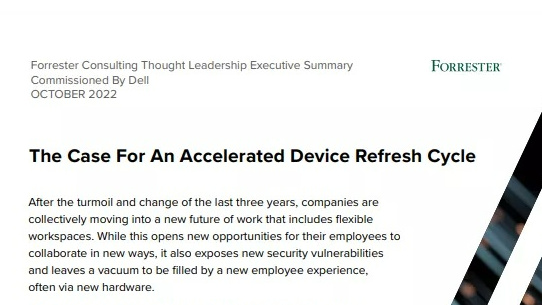Q&A: Cisco collaboration MD Marianne Calder
Why the rise of the millenial workforce makes collaboration a must

Marianne Calder is Cisco's managing director for EMEAR collaboration and video business, and is speaking at IT Pro and Cloud Pro's Collaboration and Communication 2016 event in London on Thursday, 7 July.
Running from 9am to 4.30pm in Blackfriars, the event aims to give CIOs, IT leaders and heads of departments all the information they need on how collaboration tools can help their organisations work more effectively.
With speakers from IBM, Google, Slack, Cisco and Dropbox all presenting, and a Slack case study involving the CEO of Dennis Publishing, James Tye, it's your opportunity to put your questions directly to people who have the answers.
Below, Marianna takes some time to explain exactly why collaboration is so important to Cisco, and its potential to redefine the ways we work.
Define collaboration in just three words
- People - people are key to influencing processes and culture- Collisions - virtual or physical, the way people come together- Innovation - something which happens as a result when people come together, listen to others, and start to build a new future together
How important is effective communication to modern business success?
Sign up today and you will receive a free copy of our Future Focus 2025 report - the leading guidance on AI, cybersecurity and other IT challenges as per 700+ senior executives
It is essential. Effective communication in a business ecosystem has never been more critical and it will continue to evolve. The way we work has changed and it means we communicate a lot more intensively both inside our organisations and outside.
Without strong collaboration capabilities we are not able to drive innovation and capture growth opportunties for the future. Consider a situation where we did not have effective communication between colleagues, partners and customers, and the detrimental effect this would have on the productivity and how well any employee can best do their job. Moreover, with the next-generation of millenials taking up a larger part of the workforce, companies have to provide the infrastructure and capabilities to work anywhere and anytime to attract the right talent for the future. Communication is essential for employees both to be productive and to be innovative in an ever-changing world.
With the digital disruption we see today, any company who does not or is unable to listen to partner and customer feedback is in jeopardy. They are unable to align sales, marketing and portfolio activities around key care-abouts which influence buying behaviour and drive business success.
What are the key benefits of having the right collaboration and communication strategy in place and acting upon it?
Collaboration and communication strategies accentuate the people, processes and culture your organisation represents. They provide the means to reflect and change to what the organisation needs to be for future success.
To be successful, these strategies need to be inclusive, support diverse working environments and drive innovation- all of which are key benefits for a modern and agile company.
What are companies currently doing well when it comes to collaboration and communication?
Companies are becoming more aware or awakened to the benefits of working more collaboratively and with more facilitative communication. A rising number of employees are able to work remotely and this allows them to tap into new talent streams.Leaders are able to share their strategy and direction more transparently, removing organisational barriers and providing innovative freedom amongst communities of common interest from anywhere in the company.
Conversely, what could they be doing better/more of/less of? And why?
Correlation of lessons learned from the social networking space with business environments highlight the need to integrate better with a company's core business processes.
There is the need to motivate employees, partners and customers with soft rewards and programmes to recognise participation (post, read and share) in collaborative ways of working together. It is not just about a new application, regardless of how good it is.
Who in the organisation should take the lead when it comes to choosing the right tools and implementing them successfully?
The user - with the support of line of business (LoB) and IT. If the ultimate goal is to drive innovation and productivity across organisational boundaries, a consortium of core LoBs and IT groups is required.
As IT departments are transformed to generate value (as opposed to operations), and budgets are transferred to LoBs, these stakeholders need to be clearly defined. IT remains a critical influencer in the success of tool/platform adoption through methodical testing, controlled rollout, and ensuring secure adoption happens within LoB communities.
How do you ensure you're collaborating and communicating effectively?
How well do you handle change and new projects? Understanding that some things require individual focus, many activities in an agile enterprise require collaboration with stakeholders who are in different time zones and geographies. How well are your business priorities known? And how can people learn more and understand their role to contribute to the collective success of the organisation? The ease and enthusiasm with which you regard sharing and including others is a measure of collaborative and communicative efficiency.
Where do you see the market and adoption of communication and collaboration tools headed?
As collaborative work practices have been refined and user experiences have become more intuitive we are seeing unprecedented adoption amongst disruptive and forward-looking companies. Uber is a great example of a company truly disrupting an industry which wasn't prone or maybe ready to be disrupted. Many industries are following suit and applying very innovative approaches.
Also, as millennials begin to join our workforces, current trends towards mobile user experiences (UX), contextual privacy, consolidated identity services, core business process/application integration, cloud services and emulated meetings will become more prolific.
What will successful corporate collaboration and communication looks like five or 10 years from now?
The seeds sown today will influence the success of a corporate collaboration and communication strategy in the future. Understanding how to leverage the existing IT infrastructure and consideration of how you want the people, processes and culture to interact will reveal the journey ahead.
The IoT will become more prevalent, with collaboration and communication becoming more mainstreamed with smart meetings, building and cities, while user experiences will be intuitive and not restricted to dedicated devices.
The way people want to work together is changing dramatically and the technology is now ready to meet these desires has.
Why should people attend our Collaboration and Communication 2016 event?
Being at the front of the wave will provide an opportunity to hear the views from industry leaders, create an informed opinion about how this relates to you, and help influence the collaboration and communication strategy for your company or customers.
ITPro is a global business technology website providing the latest news, analysis, and business insight for IT decision-makers. Whether it's cyber security, cloud computing, IT infrastructure, or business strategy, we aim to equip leaders with the data they need to make informed IT investments.
For regular updates delivered to your inbox and social feeds, be sure to sign up to our daily newsletter and follow on us LinkedIn and Twitter.
-
 Hounslow Council partners with Amazon Web Services (AWS) to build resilience and transition away from legacy tech
Hounslow Council partners with Amazon Web Services (AWS) to build resilience and transition away from legacy techSpomsored One of the most diverse and fastest-growing boroughs in London has completed a massive cloud migration project. Supported by AWS, it was able to work through any challenges
-
 Salesforce targets better data, simpler licensing to spur Agentforce adoption
Salesforce targets better data, simpler licensing to spur Agentforce adoptionNews The combination of Agentforce 360, Data 360, and Informatica is more context for enterprise AI than ever before
-
 'Digital hide-and-seek': Workers are wasting hundreds of hours a year sourcing the information they need to carry out their role
'Digital hide-and-seek': Workers are wasting hundreds of hours a year sourcing the information they need to carry out their roleNews Knowledge workers globally are wasting a quarter of their working week tracking down information, new research from Atlassian has revealed.
-
 Untethered: How CIOs and CISOs are paving the way for the new hybrid workforce
Untethered: How CIOs and CISOs are paving the way for the new hybrid workforceWhitepaper Effective techniques to transition from exposed legacy infrastructure to an effective zero trust strategy
-
 Unlocking the power of your digital services
Unlocking the power of your digital servicesSponsored Businesses have invested significant cash into technology since COVID-19, but are they really getting their money's worth?
-
 Delivering fast and secure digital experiences for the modern hybrid workforce
Delivering fast and secure digital experiences for the modern hybrid workforceWhitepaper A new approach to digital experience monitoring that can monitor the health of all systems
-
 Collaboration is the glue that holds your business together
Collaboration is the glue that holds your business togetherSPONSORED A combination of productivity tools and cloud telephony can enable the best from your workforce
-
 The future of work and the forgotten workforce
The future of work and the forgotten workforcewhitepaper How to deploy a mobile-first strategy so no one gets left behind
-
 The case for an accelerated device refresh cycle
The case for an accelerated device refresh cycleWhitepaper Achieving a more cost-effective device lifecycle overall
-
 Employees are choosing how they work
Employees are choosing how they workWhitepaper And with the right secure digital strategy, this could be a great thing for your business: today and far into the future

